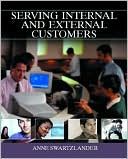Category Books
- Fiction Books & Literature
- Graphic Novels
- Horror
- Mystery & Crime
- Poetry
- Romance Books
- Science Fiction & Fantasy
- Thrillers
- Westerns
- Ages 0-2
- Ages 3-5
- Ages 6-8
- Ages 9-12
- Teens
- Children's Books
- African Americans
- Antiques & Collectibles
- Art, Architecture & Photography
- Bibles & Bible Studies
- Biography
- Business Books
- Christianity
- Computer Books & Technology Books
- Cookbooks, Food & Wine
- Crafts & Hobbies Books
- Education & Teaching
- Engineering
- Entertainment
- Foreign Languages
- Game Books
- Gay & Lesbian
- Health Books, Diet & Fitness Books
- History
- Home & Garden
- Humor Books
- Judaism & Judaica
- Law
- Medical Books
- New Age & Spirituality
- Nonfiction
- Parenting & Family
- Pets
- Philosophy
- Political Books & Current Events Books
- Psychology & Psychotherapy
- Reference
- Religion Books
- Science & Nature
- Self Improvement
- Sex & Relationships
- Social Sciences
- Sports & Adventure
- Study Guides & Test Prep
- Travel
- True Crime
- Weddings
- Women's Studies
Serving Internal and External Customers » (1st Edition)

Authors: Anne Swartzlander
ISBN-13: 9780130283412, ISBN-10: 013028341X
Format: Paperback
Publisher: Prentice Hall
Date Published: August 2003
Edition: 1st Edition
Author Biography: Anne Swartzlander
Anne Swartzlander brings to this title a range of professional and teaching experience. She brings decades of experience in management, business development, research, and retail sales.
Dr. Swartzlander has her Ph.D. from Ohio State University in Consumer Economics. She has taught at several major universities including the University of Georgia and the University of Tennessee. She was recently nominated for the American Marketing Association's Distinguished Marketing Professor award.
Book Synopsis
This unique book is a customer service training reference/workbook, with a customer-centered orientation model. Its integrated approach emphasizes a business organization's service philosophy and strategy, its systems, and the people-management policies that allow the business to succeed in the 21st century.
With its comprehensive coverage of customer service communication “best practices,” Customer Service” provides innovative concepts and techniques appropriate for both experienced and entry-level customer service providers.
This interesting and informative book is necessary reading for vice-presidents, directors, managers, and supervisors in Consumer Affairs; customer service managers, directors and managers of Call Centers, managers and supervisors in Customer Relations; Customer Support managers; and Customer Service trainers.
Table of Contents
1. CUSTOMER SERVICE.
Definition of Customer Service.
Customers' Perceptions of the Quality of Services.
Importance of Customer Service.
Relationship of Customer Service to Marketing, Operations, and Human Resources.
Customer Service Model.
Exercise—Be Your Own Customer.
2. CUSTOMER SERVICE STATEGY AND SYSTEMS.
Customer Service Model.
Customer Service Strategy.
Characteristics of an Exceptional Customer Service Strategy.
Customer Experience Strategy.
Service Fairness.
Definition of Systems.
Characteristics of Exceptional Customer Service Systems.
Systems Improvement.
Exercise—Blueprinting and Analyzing a System.
3. CUSTOMERS.
External and Internal Customers.
Customer Loyalty.
Customer Needs and Expectations.
Customer Expectations and Loyalty Research.
Benefits of Exceptional Customer Service.
Costs of Exceptional Customer Service.
Project—Mystery Shopping.
4. PEOPLE.
The People Component.
Internal Customer Service.
Frontline Employees' Role.
Employee Satisfaction Equals Customer Satisfaction.
Factors Contributing to Employee Satisfaction.
Next-Generation Workforce.
Case—The Root Cause of the Problem.
5. EXCEPTIONAL PERFORMANCE.
Elements of Exceptional Performance.
Positive and Negative Attitudes and Mind-Sets.
Emotional Intelligence.
Self-Talk.
Personal Style Tendencies.
Teamwork.
Personal Management Techniques.
Project—Customer Service Communication Skills.
6. NONVERBAL COMMUNICATION.
Importance of Nonverbal Communication.
Definition and Functions of Nonverbal Communication.
Body Language.
Voice Cues.
Use of Space.
Touch.
Artifactual Communication.
Time.
Case—I Contact.
7. VERBAL COMMUNICATION.
Importance of Verbal Communication.
Acceptable Verbal Communication.
Unacceptable Verbal Communication.
Difficult Conversations.
Written Communication.
Business Etiquette.
Civility in the Workplace.
Case—Insufficient Service.
8. LISTENING.
Importance of Listening Skills.
Effectiveness of Listening.
Stages of Listening.
Listening Barriers.
Types of Listening.
Individual Differences.
Developing Better Listening Skills.
Case—Not Mulch Listening.
9. TELEPHONE COMMUNICATION.
Effective Telephone Communication.
Best Practices.
Pre-Greeting Best Practices.
Greeting Best Practices.
Conversation Best Practices.
Closing Best Practices.
Telephone Actions.
Telephone Specialty Features.
Wireless Communication.
Case—Lack of All Aid.
10. ELECTRONIC COMMUNICATION.
Technology.
Automated Response Systems.
E-Mail Communication.
Importance of E-Mail Communication.
E-Mail Issues.
E-Mail Management.
Netiquette.
E-Mail Format.
E-Mail Composition.
E-Mail Operations.
E-Mail Response Management Systems.
Company Websites.
Fax Communication.
Case—Taxing Obfuscation.
11. PROBLEM SOLVING.
Customer Service Problems.
Thinking.
Styles and Thinking.
Environment and Thinking.
Creativity.
Mind Mapping.
Brainstorming.
Consensus Decision Making.
Conflict Resolution.
Exercise—Conflict Resolution.
12. EXCEPTIONAL CUSTOMER SERVICE.
Exceptional Customer Service in Challenging Situations.
Dissatisfied or Angry Customers.
Mistaken Customers.
Problem Customers.
Customer Responsibilities.
Diverse Customers.
Multicultural Customers.
Adaptation.
Customers with Disabilities.
Emotional Labor.
Case—Nowhere You Want to Be.
13. CUSTOMER PROBLEM RESOLUTION AND RECOVERY.
Customer Complaint Behavior.
Problem Resolution and Recovery Strategies.
Problem Resolution and Recovery Systems.
Problem Resolution and Recovery Procedures.
Case—Differential Indifference.
Index.
Subjects

